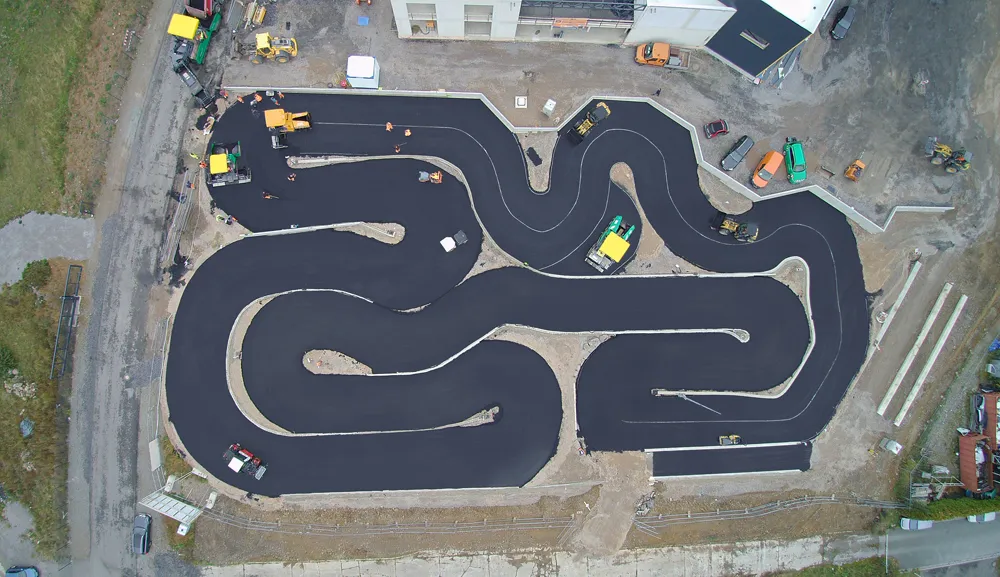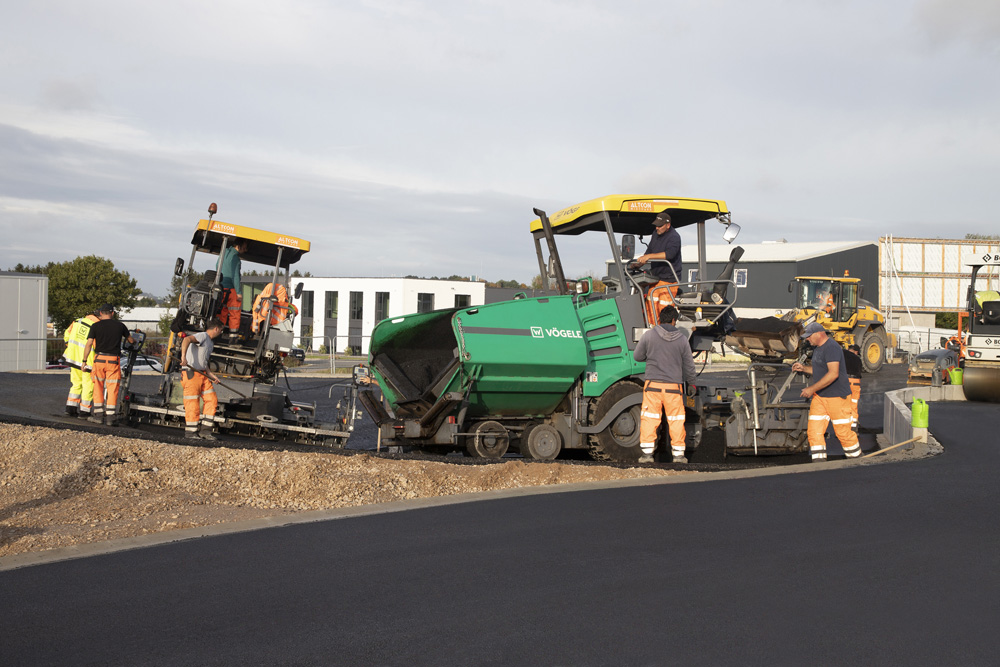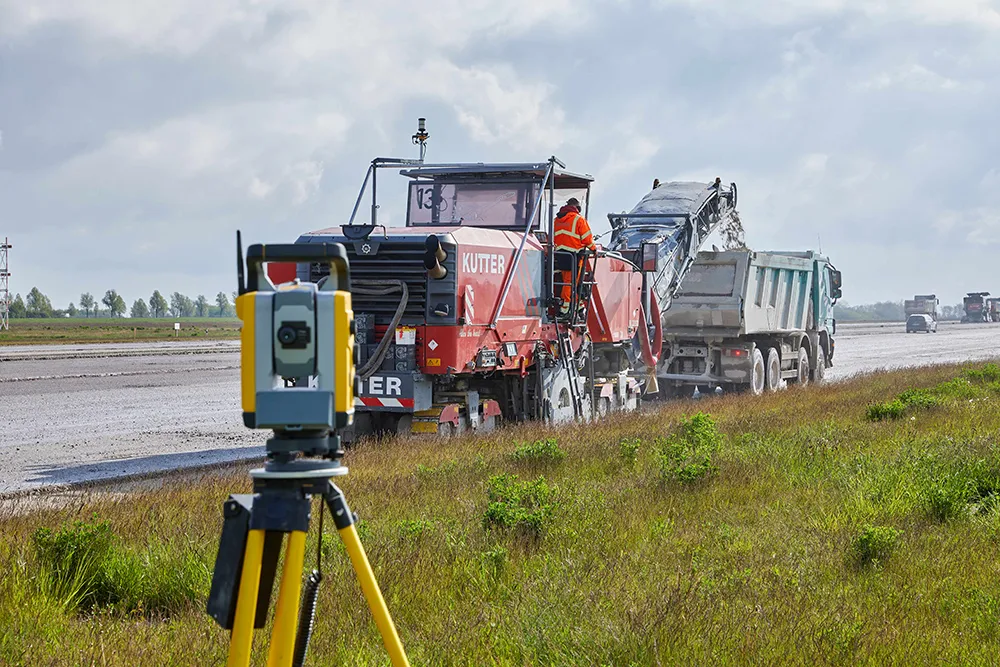
The track was built at the new headquarters of a global market leader for electric and petrol-driven go-karts. As a result, the quality of the track had to be first rate. This made the Hemer jobsite at the headquarters of RiMO Germany a serious challenge.
The work was handled by road contractor Ossenberg Aufbereitung, Straßen- und Tiefbau, using two of its Vögele SUPER 1303-3i wheeled pavers. Seven hairpin bends with a crossfall of up to 20% and a chicane resulted in a circuit in the northern area of Sauerland that demands skill from those driving the go-karts. Although the course has been designed primarily for testing go-karts, its use is also available to locals as a leisure facility.
The track varies in width from 5.2-9.5m. At the widest points, the paving team also used a Vögele SUPER 1803-2 Universal Class paver. A key factor in achieving a quality result was the use of a wheeled machine for the tight corners.
Wheeled pavers have advantages when paving tight bends as they can steer with precision and the 6x4 drive also helps to maximise grip. The Vögele machine runs on two pneumatic rear tyres and four front wheels mounted on bogies, a layout that also copes with surface irregularities. The Pivot Steer function on the Vögele wheeled machines played an important role in achieving accurate paving on the tight curves. The steering brake automatically brakes the rear wheel on the inside of the bend hydraulically. The system helps to draw the machine round the bend, allowing much tighter turning circles. The system is useful for paving on cramped jobsites such as inner-city building projects as well as racing circuits.

Paving was performed hot-to-hot to maximise quality. This is because the more bends a track has, the greater the benefit of the smallest possible pave width. This ensures that the auger always transfers the right quantity of material to the full width being paved, even with a series of left- and right-hand bends as well as tight curves. This delivered a track that met specifications across the full pave width. In the process, Extending Screed AB 340 TV provided quality surfaces, as well as a high degree of evenness, ensuring that go-kart drivers will not lose contact with the ground in future.
Supplying mix on the jobsite was a challenge: it was impossible for large trucks to drive around on the site, so a Vögele MT 3000-2i Offset material feeder was positioned close to the entrance where it was able to receive material from the mix truck. As soon as the two SUPER 1303-3i machines were working within range of the MT 3000-2i Offset, the material feeder used its pivoting conveyor to transfer mix to the paver hoppers. At all other points, the asphalt was transferred to wheeled loaders which then transported it to the pavers.








